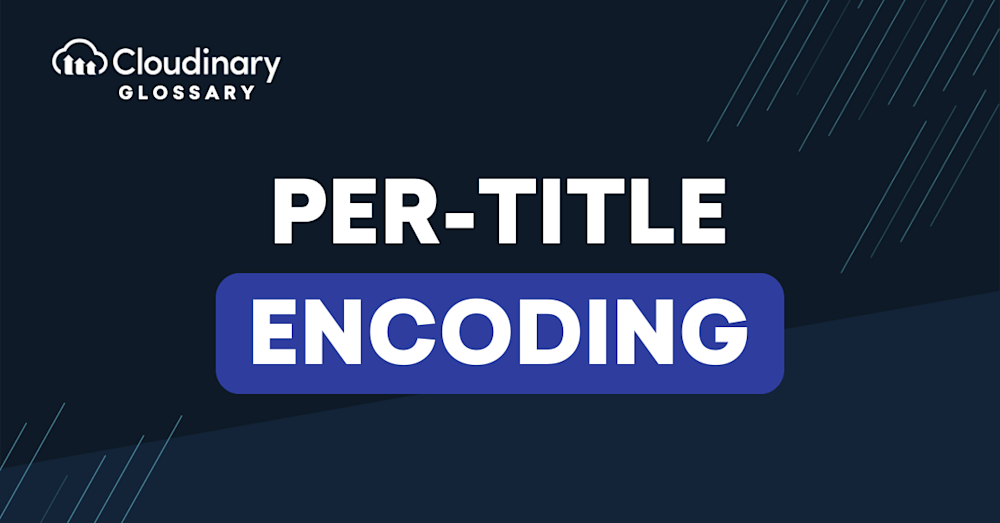What Is Per-Title Encoding?
Per-title encoding is a video encoding technique that tailors the compression settings of each video title individually. Traditionally, video content is encoded using fixed compression settings, which may not be optimal for all types of content. Per-title encoding takes a more refined approach by analyzing each video title’s characteristics, such as complexity, motion, and visual details, and adjusting the compression settings accordingly.
By dynamically adjusting the compression settings for each video title, per-title encoding can achieve higher video quality and bandwidth efficiency, resulting in an overall enhanced viewing experience.
Advantages of Per-Title Encoding
There are several advantages of implementing per-title encoding in video streaming:
- Improved Video Quality – By optimizing the compression settings specifically for each video title, per-title encoding can maximize video quality and reduce artifacts introduced by excessive compression.
- Bandwidth Efficiency – Per-title encoding enables bandwidth savings by tailoring the video bitrate to match the content’s complexity. Less complex titles can be encoded with a lower bitrate, reducing bandwidth consumption.
- Cost Savings – With per-title encoding, streaming platforms can optimize video delivery costs by reducing bandwidth consumption while maintaining high-quality video streams. This can result in significant cost savings, especially for platforms with large video libraries.
- Better User Experience – Per-title encoding offers viewers a more enjoyable and seamless streaming experience by delivering higher quality videos with optimized bandwidth usage.
Disadvantages of Per-Title Encoding
While per-title encoding has garnered attention for its ability to optimize video quality and streaming efficiency, it’s important to acknowledge that this approach isn’t without its challenges.
- Resource Intensiveness – Per-title encoding requires a substantial amount of computational resources. Each video needs to be analyzed and encoded separately, which can result in significant processing overhead.
- Complexity in Implementation – Setting up a per-title encoding workflow involves a complex mix of analytics and encoding decisions, which can be daunting for teams without deep technical expertise or robust infrastructure.
- Increased Costs – The computational demand of per-title encoding generally translates to higher costs, especially for content providers with large libraries that need to be processed.
- Time Consumption – Encoding on a per-title basis is inherently more time-consuming as each piece of content undergoes a unique encoding process, creating potential bottlenecks in content delivery pipelines.
- Difficult Scalability – As the media library grows, per-title encoding scales linearly, potentially becoming a barrier for platforms with rapidly expanding content volumes.
Where Is Per-Title Encoding Used?
Per-title encoding is used in a variety of industries, each with its demand for high-quality video streaming balanced against bandwidth considerations. Here are some common examples:
- Streaming Services – Giants like Netflix and Amazon Prime Video use per-title encoding to tailor the streaming quality of movies and TV shows to ensure they appear crisp on any device while minimizing bandwidth usage.
- Social Media Platform – With the rise of video content, platforms such as Facebook and TikTok utilize per-title encoding to optimize user-uploaded videos, accommodating a vast range of devices and network conditions.
- Online Education – E-learning platforms implement per-title encoding to present clear and uninterrupted video lectures, which is especially crucial for learners accessing materials on mobile networks or with limited data plans.
- Video Conferencing Tools – As remote work becomes more prevalent, per-title encoding is key for tools like Zoom or Microsoft Teams to provide seamless video quality that adapts in real-time to the variable internet speeds of users globally.
- Live Sports Broadcasting – Sports streaming services apply per-title encoding to deliver the best possible quality of live sports content, ensuring that fast-paced action is transmitted clearly across different viewing platforms.
By recognizing the diverse utilization of per-title encoding, developers and technical professionals can better appreciate its integral role across industries, allowing them to craft more effective streaming strategies tailored to their specific service offerings.
Conclusion
Per-title encoding is pivotal in ensuring the streaming experience meets viewer expectations. By tailoring the compression settings to each video title, per-title encoding maximizes video quality while minimizing bandwidth utilization and costs.
Offering an end-to-end solution for your media management needs, Cloudinary’s dynamic video platform is built to adapt to these challenges, incorporating intelligent automation and comprehensive analytics capabilities. If you’re looking to optimize your video content performance while preserving an efficient, cost-effective workflow, consider what Cloudinary can do for you.
Check out Cloudinary today – redefine what’s possible in the digital media landscape.




